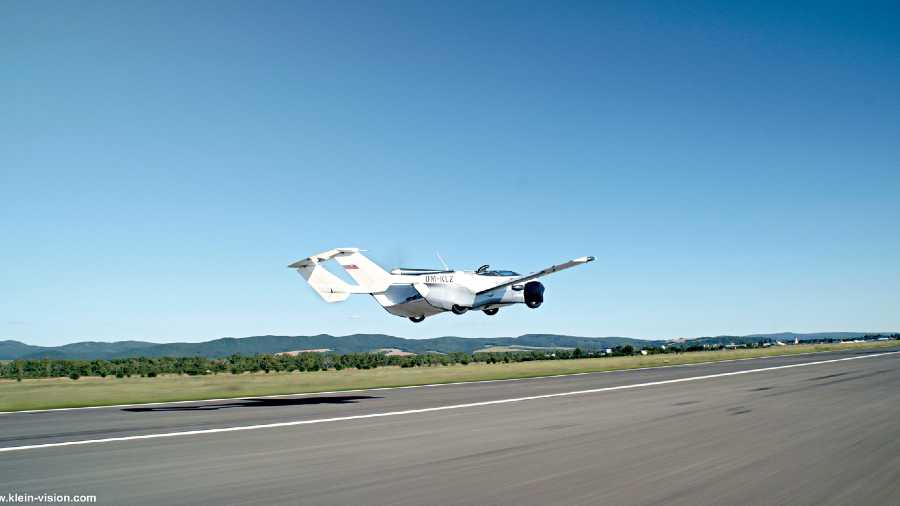KLEIN VISION AIRCAR
A couple of weeks ago, Bratislava-based company Klein Vision announced the successful flight of the prototype of its AirCar, a dual-mode car-aircraft vehicle, from Nitra airport to Bratislava airport, an air distance of about 75km, in about 35 minutes. This brought the AirCar closer to production.
After it landed, at a press of a button the aircraft transformed into a sports car in under three minutes and was driven by its inventor, Stefan Klein, and the company’s co-founder, Anton Zajac, to downtown Bratislava.
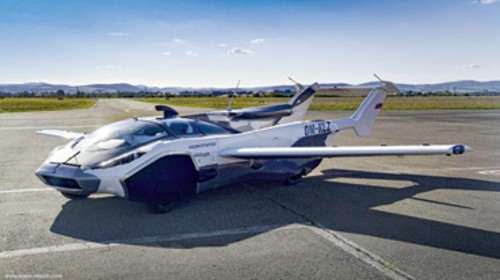
The AirCar Prototype 1 is equipped with a 160hp BMW engine and a fixed propeller
The company says: “The AirCar Prototype 1 is equipped with a 160hp BMW engine with fixed propeller and a ballistic parachute. Under the supervision of the Civil Aviation Authority, the AirCar has completed over 40 hours of test flights, including steep 45-degree turns and stability and maneuverability testing. AirCar Prototype 1 has flown at 8,200ft and reached a maximum cruising speed of 190kmph.”
AirCar Prototype 2, the pre-production model, will be equipped with a 300hp engine and will have a EASA CS-23 aircraft certification with an M1 road permit. It is expected to have a cruise speed of 300kmph (162 knots) and range of 1,000km.
Terrafugia Transition and TF-X
Terrafugia makes a pretty big promise with the Transition. It says: “One vehicle, two modes of travel. The Transition seats two and converts from drive mode to flight mode in under a minute with just the push of a button. Eliminating the hassle of hangar storage, ground transportation, and aviation fuel, the Transition fuels up with automotive gas and can be stored in your home garage.” That sounds tempting enough. It is also a hybrid that has a 100hp Rotax engine for flight and a hybrid powertrain for the road mode. It can fly over 600km at a top speed of 161kmph and seats two.
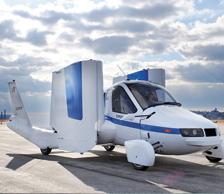

The Terrafugia Transition in flight and on ground with folded wings. This is a two-seater that the maker calls a ‘roadable aeroplane’. (Below) The Terrafugia TF-X in the air and on land. This model is more of a ‘flying car’ and looks quite neat on the ground too.
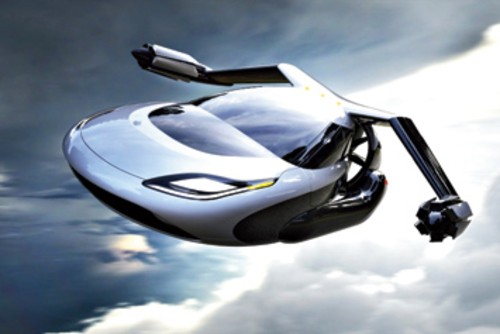

The TF-X meanwhile promises to do away with the need for a runway with its vertical take-off capabilities by extending its wings at the push of a button. It is also temptingly practical since it can fit into a standard sized garage once the wings are folded in. It is supposed to have a 300bhp petrol engine paired with a couple of electric motors and a flying range of about 800km. Announced in 2015, it is still under development by the Boston company and will probably be available commercially only sometime in the middle of the 2020s.
AEROMOBIL AM4
The AM4 (right) is scheduled for commercial launch in 2023. The manufacturer is billing it as “the new ultra-high-end vehicle equally at home on the road or in the sky”. Expected to cost about $1.5 million, it can transition from road to air configuration in about three minutes. It is claimed to have top driving and flying speeds of 160kmph and 260kmph, respectively.
PAL-V LIBERTY
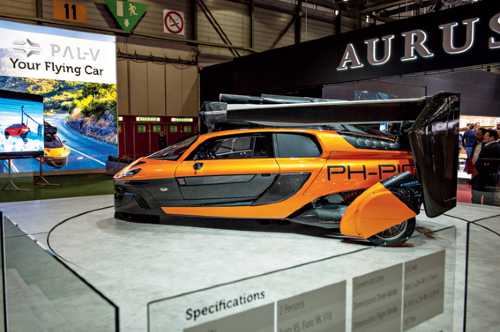
The Personal Air Land Vehicle (PAL-V) (right) is the first flying car to get road permission for Europe. Its Dutch manufacturer has been developing the vehicle for over a decade and is using a gyroplane design. It has two versions. In 2020 it signed a memorandum of understanding to set up a production plant in Gujarat.
Pop.Up next
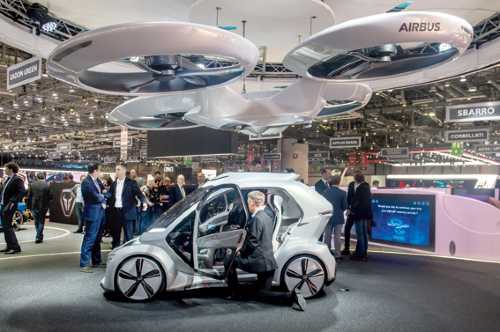
The ‘Pop.Up Next’ is a concept flying car, a hybrid vehicle that blends a self-driving car and passenger drone and has been created by Audi, italdesign and Airbus and was displayed at the Geneva International Motor Show in 2018. The idea is that of a passenger module that can fit both a drone that can lift and ferry it to different places with its passengers. Then it can be placed on a platform on four wheels and dock into it. That would convert it into a roadgoing vehicle. In fact, chances are pretty high that the development of the bulk of the flying cars is going to take this direction with a multimodal operating system rather than a car that carries its wings around with it and would need a runway or a long straight traffic-free road to take off or land. The Pop.Up Next uses a vertical takeoff and landing mode using a drone that is more practical for urban environments.
AEROCAR

Considered to be one of the more practical flying cars, the first of this line was made as far back as 1949. On the road the Aerocar towed its wings and tail around and could be converted into flying mode in a matter of minutes. However, neither the original nor any of the later couple of versions went into production and a total of only six were made.
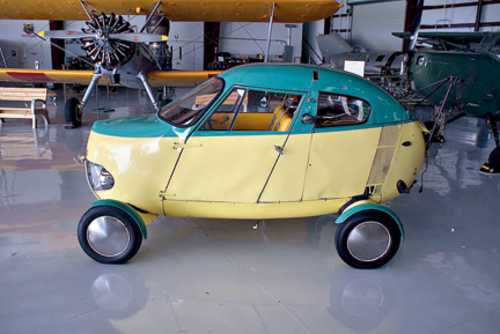
Winging it
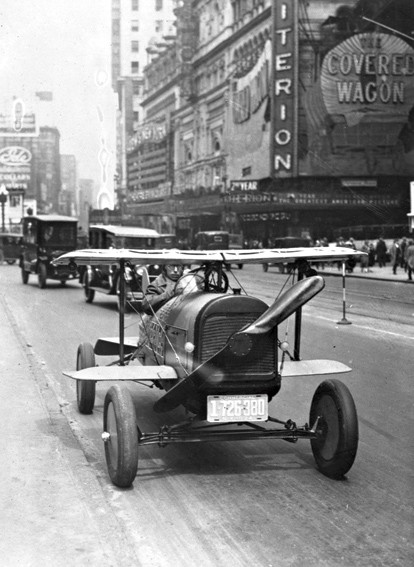
Both the motor car as well as the early aircraft were developed around the same time. Some have wanted to merge the two and make one for both the road and the air. This Hulton Archives photo from 1924 shows a car with wings and a propeller protruding from the radiator grille driving through Times Square, New York. It was invented by A.H. Russell of Nutley, New Jersey. We are not sure it got airborne, but a century later we are still trying to make the idea fly.
Pictures: Getty Images, companies, Valder137

